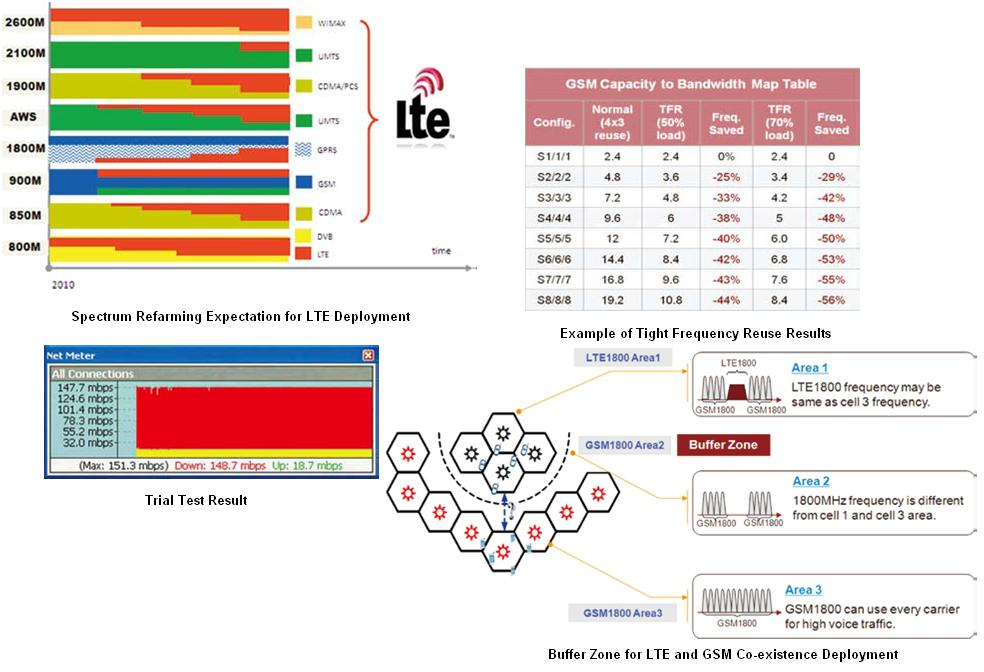Here I write down one basic idea of Spectrum reframing in LTE and why operators require spectrum reframing for LTE.
Operators worldwide are looking forward to new LTE technologies deployment but not every one of them possess brand new spectrum required for LTE deployment. As a result, many networks are expected to perform some level of reframing so new LTE technologies can be deployed there. Current and the expected migration timeframe for different frequency band are shown figure below.

GSM Spectrum Reframing
As shown in the figure above, for Operators not in possession of new LTE spectrum, there is an aggressive drive from Operators in the 1800MHz community to implement LTE due to the relative abundance of spectrum in that band. With this approach, recovery of GSM spectrum is an essential step as most 1800MHz networks are still entrenched with GSM technologies.
Tight Frequency Reuse (TFR) technology helps Operators reframe existing GSM spectrum for the deployment of LTE or UMTS networks. An overview of capacity improvement and KPI achieved with one Operator is listed figure.
LTE1800 eNodeB supports the compact bandwidths by strict filer and RB punching. Compact bandwidths for 5 MHz, 10 MHz, 15 MHz and 20 MHz are supported.
- Compact bandwidth configuration helps operators make full use of anomalous frequency bands and reduce the waste of frequency fragment.
- Compact bandwidth need not to accord with standard bandwidth; Compact bandwidth produces higher
- Throughput and better user experience.
- Compact bandwidth is completely transparent to UE and has no impact to R8/R9 UE.
148Mbps downlink speed rate in trial test with 20MHz LTE bandwidth for LTE1800 as shown in figure.
Buffer Zone
Due to financial and/or traffic requirement, Operators may opt to deploy LTE only in the core urban area but maintain their GSM system in the same spectrum at the fringe of the network. As a result, LTE may have to co-exist with other technologies (e.g. GSM) but at different locations. In order to ensure minimal interference is between the EUTRAN and GSM BTS (or Node B of UMTS), radio engineer can introduce a buffer zone concept as shown figure to the customer.
The final implementation will certainly be more complex due to coverage variations, traffic requirement, interRAT as well as possible frequency planning arrangement but buffer zone concept will remain a feasible option for LTE and GSM co-existence.